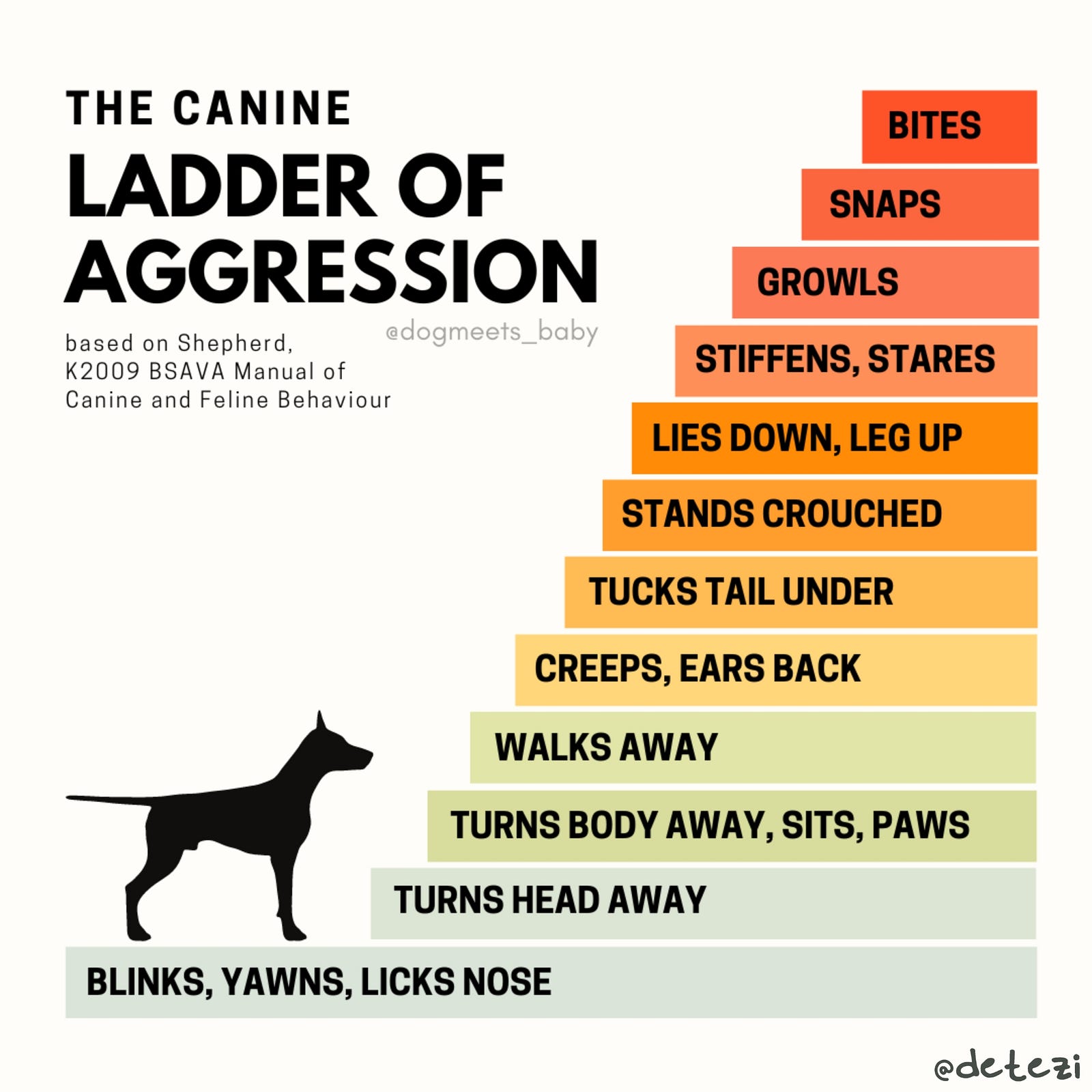5 Ways that shelter volunteers jeopardize dogs’ lives
Are you making these catastrophic mistakes?
In an open-intake animal shelter, a bite incident can be a death sentence for a dog. Unfortunately, well-meaning, but under-trained volunteers often puts dogs in situations in which dogs are significantly more likely to bite.
Here’s five of the most common mistakes.
Are you a Medium subscriber? Reading this link on Medium helps us produce more education content.
Misunderstanding or ignoring dog body language
Dogs primarily communicate through their body language. When we interact with shelter dogs (or any dog!), it’s absolutely vital that we are watching for signs of discomfort, fear, and pain in every interaction. Most dogs will display subtle signs of discomfort long before they growl, snap, or bite. The majority of dog bites can be avoided by respecting the dog’s communication.
‘The Canine Ladder of Aggression’ (below) is an excellent resource for understanding common signs of discomfort. Any time a dog displays any of these signs, they should immediately be given space from the interaction that is making them uncomfortable.

Touching dogs that don’t want to be touched
Many dogs don’t enjoy physical touch, especially from a stranger. This is especially common when a dog is already experiencing stress or physical discomfort. Assuming that any dog wants to be pet, hugged, kissed, or otherwise directly handled is setting them up for failure.
Practice giving dogs the opportunity to consent to touch by petting them for only 2 seconds, then stopping. If the dog nudges you or physically moves back in for more, continue petting. If a dog is not actively seeking touch or is displaying any signs of discomfort, always give them space.
Putting dogs in vulnerable situations
Interactions that seem insignificant to us humans can make a dog feel incredibly vulnerable, especially when they are already stressed out. Shelter dogs are constantly exposed to multiple sources of stress: loud noise, busy surroundings, strange smells, an uncomfortable resting space, lack of mental and physical stimulation, meeting and interacting with strangers — the list goes on. If we make a dog feel even more vulnerable, we are drastically increasing the chance that the dog will bite.
Forcing a dog to sit or lay down, leaning over a dog, cornering a dog, or forcing a dog to interact with a person or other animal can result in heightened vulnerability and a bite. Always give dogs autonomy over their own body and the freedom to opt out of an interaction. Simply coexisting in the same space while the dog sniffs, rests, or entertains themself is often the perfect amount of interaction for a stressed-out dog.
Irresponsible dog-dog interactions
Safe, appropriate, and responsible dog interactions can be difficult to accomplish in a shelter environment. Extreme caution should always be taken when allowing dogs to interact with each other to ensure that the experience is positive for all dogs involved.
Dog-on-dog interactions can be physically dangerous in the moment, but the consequences of a negative interaction can go far beyond that. For many dogs, one negative experience can result in lifelong fear of or frustration around other dogs — especially if the dog was not well socialized in their life before entering the shelter.
Interacting with another dog is only socialization if the interaction is positive. Anything else is more likely to increase reactivity and decrease adoptability.
Becoming complacent
When it comes to setting dogs up for failure through carelessness, long-time volunteers can be the worst culprits. By becoming complacent, you put the dogs, other volunteers, and yourself at risk.
Assuming that cutting corners will be “fine” because you’ve gotten away with it in the past, making assumptions about a dog based on their breed or history, and rushing to get things done can quickly turn into dangerous situations.
It’s our responsibility as animal welfare advocates to check ourselves! Make an effort to keep up with best practices in handling and behavior. Regularly check in with those around you to ensure that everyone is operating on the same page. Recognize when you are becoming overwhelmed or burnt out, and make a plan to take a break to reset. No one can operate at 100% all of the time, but we owe it to the dogs to prioritize their safety and well-being in all situations.
Volunteers are the backbone of animal welfare.
Set yourself, others, and the dogs up for success by using caution and good judgement in all situations. Do your part to prevent both physical and emotional harm to the dogs that need us.
